Bilbao
Top-Rated Attractions & Things to Do in Bilbao
When Frank Gehry's Guggenheim Museum appeared along the riverbank of a down-at-the-heels provincial city in northern Spain, a place previously ignored by the tourism industry, a new phenomenon in tourism was born: architourism, describing the niche of travelers who choose destinations for their famous modern architectural works. A related term, "The Bilbao Effect," was born of this as well, as the city's economy flourished with the influx of visitors flocking to Bilbao just to see this famous contemporary art museum, which dazzles with its innovative modern architecture and extensive collection.
The Basque Country is famous for its gastronomic tradition, and Bilbao is no exception-this is the place to be if you want to experience pinxtos, a unique Basque twist on tapas. The city boasts five Michelin-starred restaurants, which serve the finest cuisine in exceptional dining rooms. Two of the restaurants are housed within major tourist attractions: Nerua Restaurant at the Guggenheim Museum and Etxanobe Restaurant at the Palacio Euskalduna.
Discover the best places to see and things to do in this vibrant city with our list of the top attractions in Bilbao.
1. Casco Viejo (Old Town)
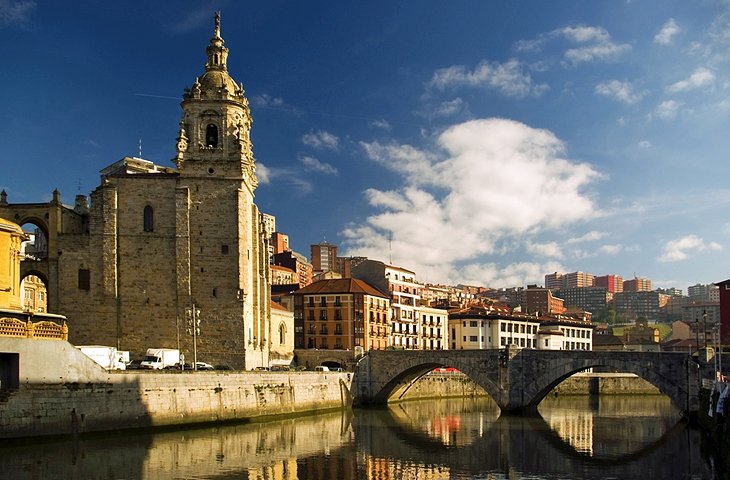
Casco Viejo (Old Town)
Full of old-world charm, the Casco Viejo is on the right bank of the river extending between the San Antón Bridge and the Church of San Nicolás. The Old Town is linked by five bridges with the New Town (Ensanche). The core of the Casco Viejo lies around the Siete Calles (Seven Streets): Somera, Artecalle, Tendería, Belosticalle, Carnicería Vieja, Barrencalle, and Barrencalle Barena. Exploring the quaint historic streets lined with enticing shops and cafés is one of the most popular things to do in Bilbao.
In the northern section of the Old Town around the Puente del Arenal is the Paseo del Arenal, the main thoroughfare of this part of Bilbao. Nearby, on the Plaza de Arriaga, is the Teatro Arriaga, an elegant Neo-Baroque theater that was inspired by the Palais Garnier Opera House in Paris. Built in 1890 and later renovated, the Arriaga Theater is the cultural hub of the city, where classical music concerts, opera, and theater performances are staged.
Another important landmark in the Casco Viejo is the Iglesia de San Nicolás de Bari. This lovely church has a Baroque facade and a unique octagonally shaped interior; the church dates from the 14th century but was completely rebuilt in 1756. The beautiful carved altar and some of the paintings are the work of Juan de Mena.
Just next to St. Nicholas Church sits Plaza Nueva (also known as Plaza Barria), a lively space which is an attraction in its own right. This guided walking tour of Bilbao's Old Quarter is an excellent way to get an overview of the area's layout and history, led by a professional guide.
2. Get a New Perspective from the Bridges of Bilbao
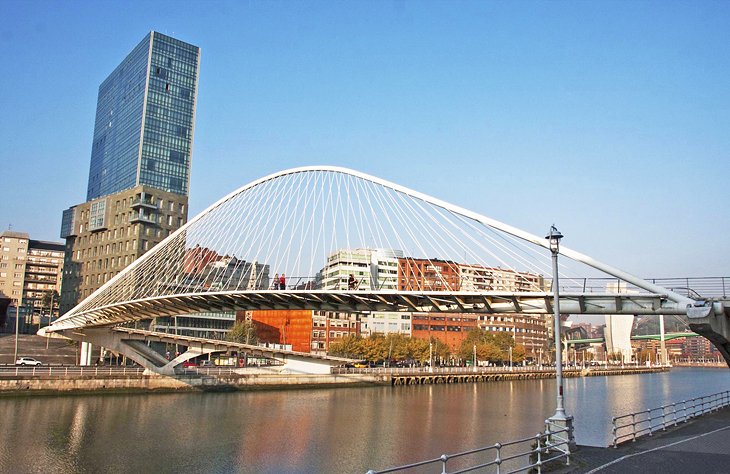
Some of the most stunning views over Bilbao are from La Salve Bridge, an architectural and artistic masterpiece in itself which is home to "L'arc rouge" (the red arch), designed by French artist Daniel Buren in honor of the Guggenheim's 10th anniversary. It crosses the estuary just next to the museum complex, and pedestrians can gain access to the bridge's viewing platforms via elevator to look down over the building and its grounds for breathtaking, picture-perfect views of the Guggenheim.
Just a few blocks down, tourists will find the Zubizuri foot bridge, a stunning suspension bridge, which is also called the Campo Volantin Footbridge, named for its designer Santiego Calatrava. The bridge has become an icon of the city, stretching across the estuary in an arched, sweeping motion, and features a glass deck.
North of the city at the entrance to the estuary, Vizcaya Bridge is a UNESCO World Heritage Site built in 1893 during the industrial revolution, designed by Alberto Palacio. It is famous for its engineering and historical architecture, being the first bridge to use a combination of steel cables and iron.
3. Sample Pinxtos in the Plaza Nueva
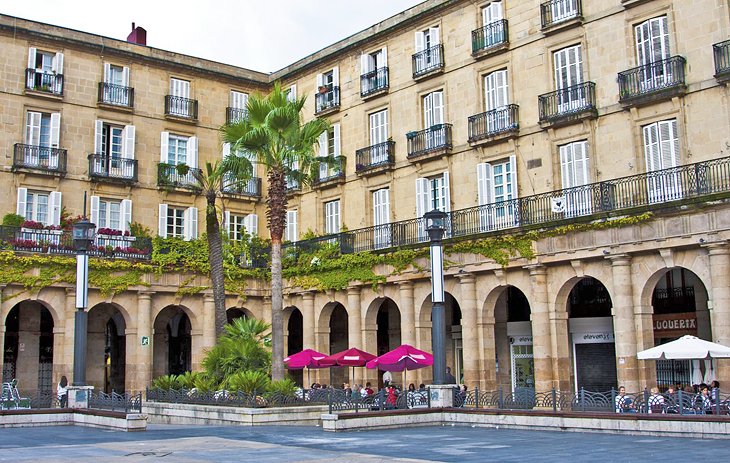
The Plaza Nueva (also known as Plaza Barria) is a Neoclassical city square built in the mid-19th century. The square is enclosed by elegant, arcaded buildings housing shops and restaurants, a perfect place to experience pinxtos. Pinxtos are a uniquely Basque version of tapas, named for their presentation-each bite or snack-sized dish is served on a toothpick or skewer. They are also referred to as pinchos, the Spanish word for "spike." Like tapas, tourists who want to experience a wide range of local goodies can easily hop from café to café, ordering a sample and then moving on.
The Plaza Nueva is also where you can find town festivals and farmers markets, and is a popular hangout for tourists and locals alike. This is also the site of a unique albeit bizarre historic event; in 1872, when the Duke of Savoy visited the city, the plaza was barricaded by sandbags and filled with water, so that gondolas could be floated inside in his honor. A painting depicting the unusual event can be found at the Bilbao Museum of Fine Arts.
4. Euskal Museoa Bilbao (Museo Vasco)
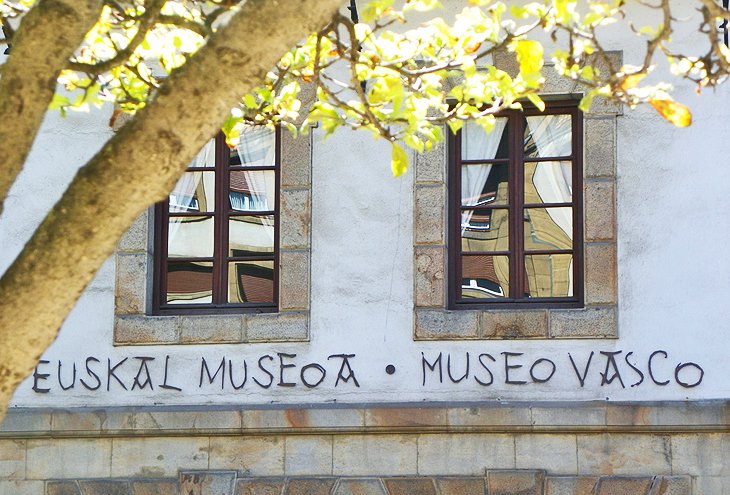
Euskal Museoa Bilbao (Museo Vasco) | Fernando Jiménez / photo modified
At the Euskal Museoa Bilbao (Bilbao Basque Museum), also called the Museo Vasco in Spanish, visitors can discover the unique culture and history of the Basque region. Housed in a beautiful Baroque building in the heart of the Casco Viejo (Old Town), the museum has three different departments that document the Basque way of life: archeology, ethnography, and history.
The archeology section displays prehistoric finds from sites in the Basque country, such as memorial stones and pieces of sculpture. One of the most prized objects of the collection is a mysterious idol of Mikeldi. The ethnography department displays Basque crafts and folk art. One of the rooms features an interesting relief model depicting the Basque provinces.
The history department is mainly devoted to the history of Bilbao and its seafaring activities from the 16th to the 19th centuries. Various exhibits illustrate the world of fishing, shipping, navigation, and other commerce of the region. The museum is open Tuesday through Sunday for an admission fee. Guided tours are available by reservation.
5. Catedral de Santiago
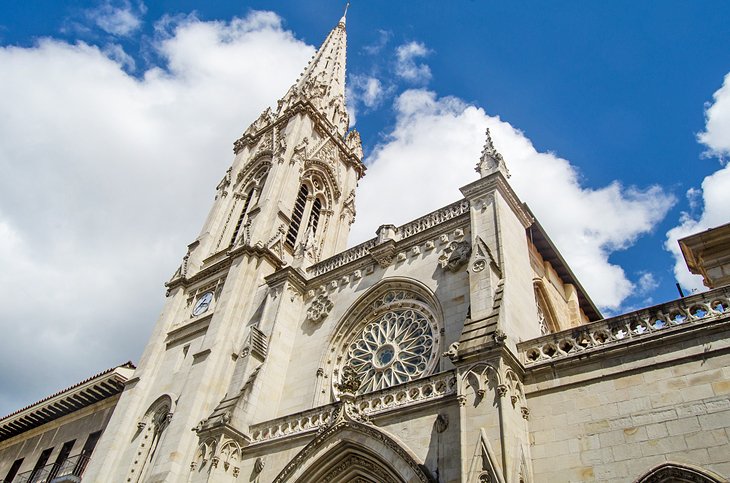
In the center of the Old Town, the Cathedral of Santiago is a 19th-century church built on the site of a 14th-century pilgrimage shrine. Medieval Jacobean pilgrims on the Route of Saint James would stop at the chapel on their way to Santiago de Compostela. The original church was damaged in 1571 by a fire and rebuilt in the 19th century in Neo-Gothic style. Today, its melodic bells can be heard throughout the Casco Viejo.
The cathedral has a majestic interior, with three naves and rib-vaulted ceilings. Especially beautiful are the choir stalls and cloister featuring fanciful Gothic details. The crypt incorporates the remaining structure of the original shrine. The cathedral is open to the public daily. Guided tours are available by appointment.
6. Bizkaia Museum of Archaeology
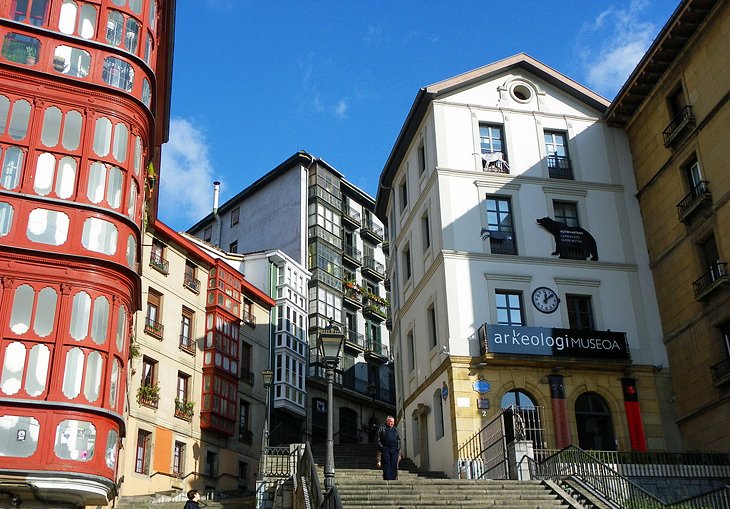
Archaeology Museum | Fernando Jiménez / photo modified
Opened in 2008, the Bizkaia Museum of Archaeology allows visitors to discover the region's ancient history and learn about the differences between the past and present. Located in the Old Town, the museum illustrates the evolution of Basque culture, from the prehistoric era to recent times, featuring historical highlights throughout the centuries.
The exhibits display fascinating archaeological objects from local excavations, which reveal insights into the unique Basque culture, including pottery, ceramics, and other items. Other exhibits include fossils and other remains of prehistoric animals that once roamed the area including the lion of Arrikrutz, an animal far larger than its present-day African cousins. The museum is also home to educational programs that teach about archeological research methods and conservation.
7. Parque Doña Casilda de Iturrizar
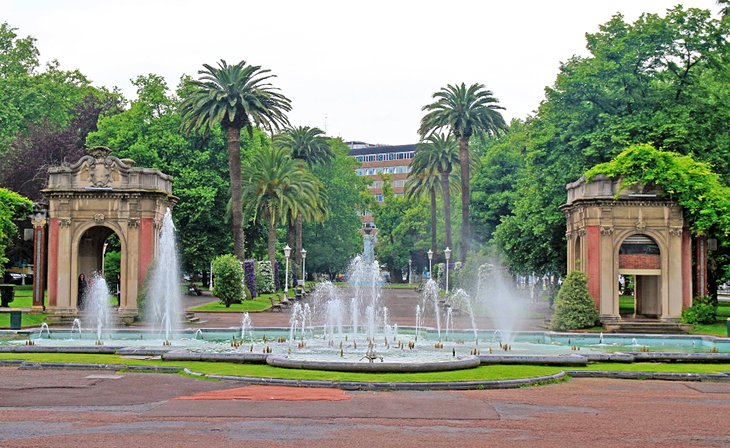
Filled with leafy palm trees and a splendid variety of trees and colorful flowers, the Doña Casilda Park offers a welcome respite from the city's urban bustle. This expansive green space is beautifully landscaped in the Romantic style. Winding pathways encourage leisurely walks, and park benches are well placed in shady spots to take in the scenery. The park is adorned with Neoclassical statues and lovely fountains.
The park's large lake is home to many little ducks and provides a charming spot for rowing boats. Other highlights are the old-fashioned merry-go-round, the outdoor theater, and a cybernetic fountain.
The Fine Arts Museum is at the edge of the park beyond the street of Artetxe Kondearen Zumarkalea. Also nearby is the one-star Michelin restaurant Aizian (29 Lehendakari Leizaola), which serves exquisite Spanish and Italian cuisine. The restaurant's stylish, contemporary dining room offers wonderful views of the park.
8. Basilica de Begoña
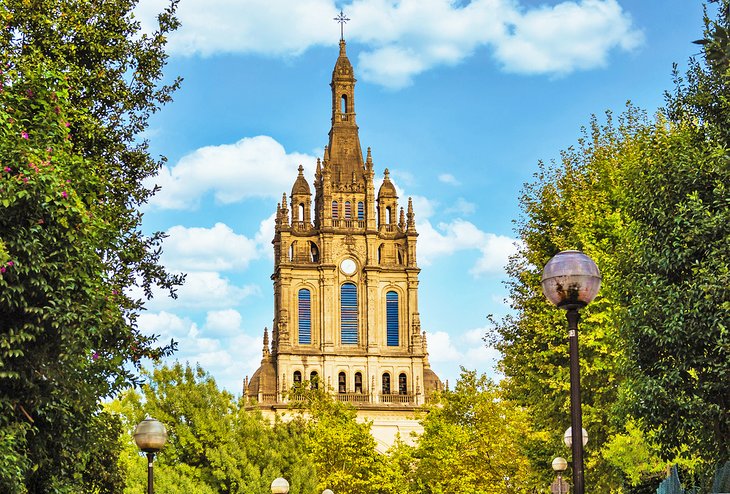
Basilica de Begoña
The district of Begoña lies on a higher level above the Old Town. This picturesque hilltop is home to an important pilgrimage church, the Basilica de Begoña. Built in the 16th century, the church has an image of the Virgin of Begoña, patroness of the city, and a lovely painting of The Pilgrimage of Begoña. The easiest way to arrive at the church is by taking the lift from behind the Church of San Nicolás. Another option is the footpath, which requires a 20-minute walk to the top of the hill. From this vantage point, visitors can take in an exceptional view of the city.
9. Museo Marítimo Ría de Bilbao
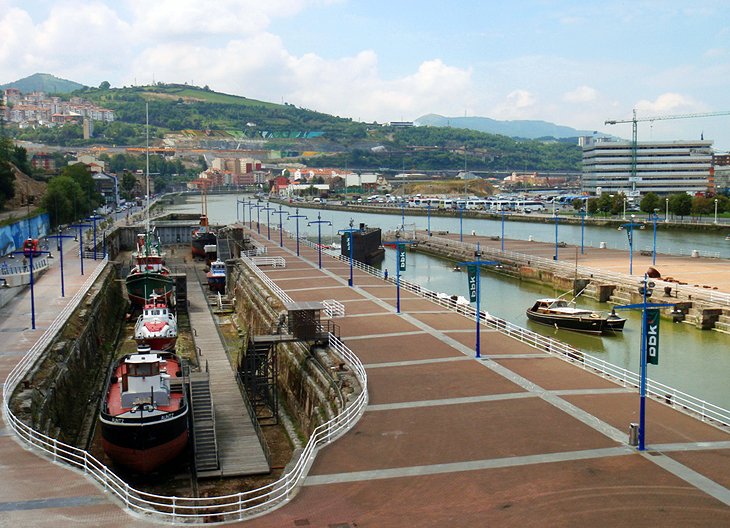
Museo Marítimo Ría de Bilbao | Daniel Lobo / photo modified
The Bilbao River Maritime Museum is near a dock of the Bilbao Estuary on the site that was formerly the outbuildings of the Euskalduna shipyard. This unique museum immerses visitors into the world of seafaring. The museum has an outdoor exhibition area that includes the docks, as well as restored vessels.
Inside the museum, exhibits educate visitors about the environment of the Bilbao Estuary, the history of the maritime industry, and the traditions of the people who have made their living from the estuary. The museum is open daily except Mondays. Guided tours are available.
10. Funicular Artxanda and Mount Artxanda
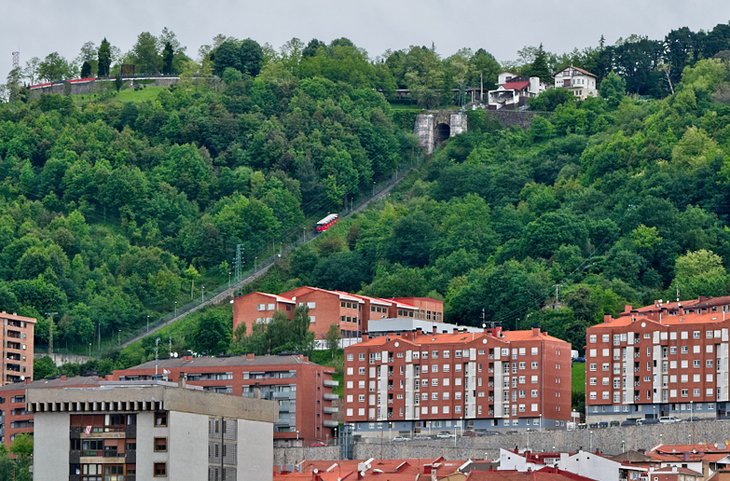
Opened in 1915, this cableway, affectionately known as the "Funi," offers a wonderful way to take in the scenery of Bilbao. The funicular takes only three minutes to travel through the hillside of the Arangoiti district to the top of Mount Artxanda, a truly rewarding destination.
From the summit, tourists are awed by the sensational panoramas of Bilbao's urban landscape. Around the Mount Artxanda summit are lovely areas for taking a walk and admiring the views. The funicular runs daily, and trains depart every 15 minutes from the Plaza del Funicular (a 10-minute walk from the City Hall).
11. Gran Vía de Don Diego López de Haro
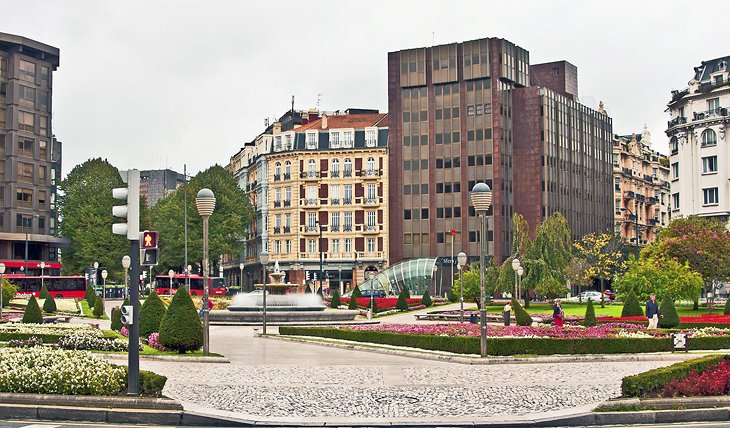
More commonly referred to simply as the "Gran Vía," this is Bilbao's main thoroughfare, home to commercial and government buildings, as well as an abundance of restaurants and shops. It stretches for 1.5 kilometers from the Plaza Circular (near the Maritime Museum) to the Plaza del Sagrado Corazón. On the way, it runs adjacent to Don Casilda Park, and then through the Ensanche district's Plaza de Federico Moyúa, home of the Chávarri Palace. This attractive and lively area is an excellent place to admire more of the city's architecture while perusing high-end shops and relaxing in a sidewalk café.
Comments
Post a Comment